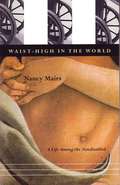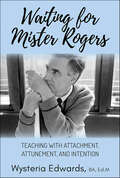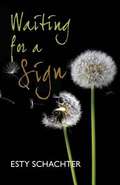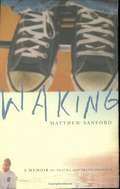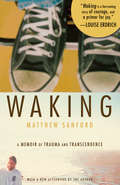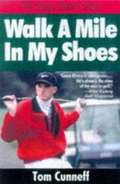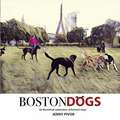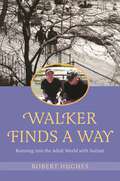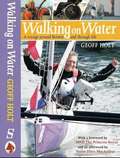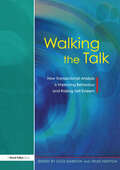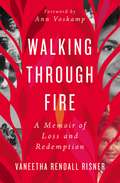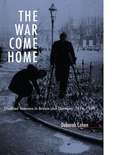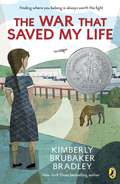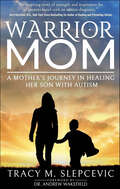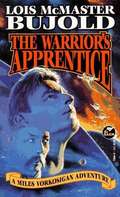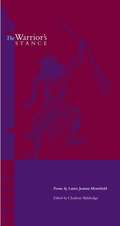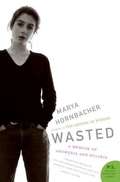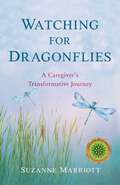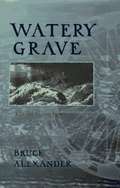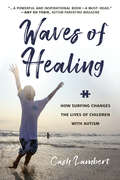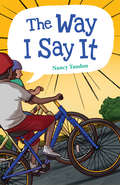- Table View
- List View
Waist-High in the World: A Life Among the Nondisabled
by Nancy MairsIn a blend of intimate memoir and passionate advocacy, Nancy Mairs takes on the subject woven through all her writing: disability and its effect on life, work, and spirit.
Waiting for Mister Rogers: Teaching with Attachment, Attunement, and Intention
by Wysteria EdwardsEvery day children enter classrooms crying out for love and relief. Waiting for Mister Rogers reveals a Kindergarten teacher's journey to find answers for the broken children entering her classroom—and the wounds in her own heart—through the personal notes, speeches, and writings of Fred Rogers. Many moments of adversity, violence, and suffering can be traced back to broken attachments in childhood. These early attachment wounds follow children into adulthood, often damaging their interpersonal relationships. Where the world offers shallow and complex solutions, the gentle work of Mister Rogers models simple and deep ways to heal insecure attachment. Waiting for Mister Rogers, answers questions of personal development and connection for anyone seeking support, such as:What do children need to be securely attached? How can teachers heal their wounds to be fully present, intentional, and effective with their students? Could student be triggering a teacher’s childhood trauma? Can teachers go deeper while doing less?It's time to remember childhood, return to the Neighborhood and teach with attachment, attunement, and intention. Mister Rogers was right all along!
Waiting For A Sign
by Esty SchachterShelly and Ian used to be close, but after Ian leaves home to attend the Hawthorne School for the Deaf, Shelly feels abandoned, and the two drift apart. <P><P> When Ian returns home with news that the future of Hawthorne is in jeopardy, Shelly isn't sure she wants him back. And Ian, who has enjoyed living with students and staff who sign all the time, feels angry when his family forgets to do the same. <P><P> An explosive argument that could drive brother and sister further apart actually offers hope for reconciliation-a hope that grows as Shelly's spirited best friend, Lisa, helps strengthen their bond. <P><P> The siblings grow closer still when they find themselves coping with an unexpected tragedy. To fully heal her relationship with Ian, however, Shelly needs to acknowledge and understand why Hawthorne-and access to the Deaf community-is so important to him. To do so, she'll need to take action and stop waiting for a sign. <P><P> Written by clinical social worker Esty Schachter, Waiting for a Sign celebrates the beauty and power of Deaf culture, offering readers an opportunity for insight and understanding.
Waking: A Memoir of Trauma and Transcendence
by Matthew SanfordThis memoir about a car accident that ended the lives of two of the author's family members and rendered the author a paraplegic describes how the surviving family members picked up the pieces of their lives, his recuperation at the Mayo Clinic, and his decision to become a disabled yoga instructor.
Waking: A Memoir of Trauma and Transcendence
by Matthew SanfordMatthew Sanford's inspirational story about the car accident that left him paralyzed from the chest down is a superbly written memoir of healing and journey—from near death to triumphant life.Matt Sanford's life and body were irrevocably changed at age 13 on a snowy Iowa road. On that day, his family's car skidded off an overpass, killing Matt's father and sister and left him paralyzed from the chest down, confining him to a wheelchair. His mother and brother escaped from the accident unharmed but were left to pick up the pieces of their decimated family.This pivotal event set Matt on a lifelong journey, from his intensive care experiences at the Mayo Clinic to becoming a paralyzed yoga teacher and founder of a nonprofit organization. Forced to explore what it truly means to live in a body, he emerges with an entirely new view of being a "whole" person. By turns agonizingly personal, philosophical, and heartbreakingly honest, this groundbreaking memoir takes you inside the body, heart, and mind of a boy whose world has been shattered. Follow Sanford's journey as he rebuilds from the ground up, searching for "healing stories" to help him reconnect his mind and his body. To do so, he must reject much of what traditional medicine tells him and instead turn to yoga as a centerpiece of his daily practice. He finds not only a better life but also meaning and purpose in the mysterious distance that we all experience between mind and body.In Waking, Sanford delivers a powerful message about the endurance of the human spirit and of the body that houses it.
Walk a Mile in My Shoes
by Tom CunneffRookie golfer Casey Martin, who suffers from a debilitating disorder that causes him to become easily fatigued, has been in the headlines lately with his lawsuit against the PGA. This book tells of the obstacles that Martin has had to overcome in his lifetime to get to where he is now.
Walk In My Shoes
by ed. Charlotte J. DewittUsher Syndrome is a rare genetic disease that causes deafblindness. This anthology includes 27 authors writing about their experiences.
Walker Finds a Way: Running into the Adult World with Autism
by Robert HughesMost people would describe Walker Hughes as warm, enthusiastic and charismatic - even if he doesn't say very much. But after several happy years living in a group home, Walker descended into a deep unhappiness, and his parents were told that their son with low-functioning autism was 'unmanageable' and a danger to others. Where did it all go wrong? From the author of Running with Walker, this witty and touching memoir tells a story of crisis and recovery of a young man with low-functioning autism. Battling miscommunication, misinterpreted behaviour and a lack of appropriate services, Walker and his parents' resilience shines through, providing a much-needed portrayal about what life is like for adults with low-functioning autism, and how we can understand the complex personalities of people with communication difficulties.
Walking Free: The Nellie Zimmerman Story
by Rosezelle Boggs-Qualls Darryl C. GreeneBiography of a deaf-blind woman who spent 18 years isolated in a mental hospital before gaining her freedom, earning a college degree and working as a social worker in northeast Ohio. The co-authors are a deaf social worker and blind pastor.
Walking on Water: A Voyage Around Britain and Through Life
by Geoff HoltThe danger in refusing to accept your disability whilst searching for a cure is that it may somehow propagate a notion that walking is good, and being in a wheelchair is bad. Even the term 'cure' implies remedying a bad situation. Of course most disabled people would prefer not to be disabled at all - me too - but so long as we are afforded equal rights, we are not discriminated against, and we can work and live in an accessible environment, then who has the right to say we would be better off walking?
Walking the Talk: How Transactional Analysis is Improving Behaviour and Raising Self-Esteem
by Giles Barrow Trudi NewtonFirst Published in 2006. Routledge is an imprint of Taylor & Francis, an informa company.
Walking Through Fire: A Memoir of Loss and Redemption
by Vaneetha Rendall RisnerThe astonishing, Job-like story of how an existence filled with loss, suffering, questioning, and anger became a life filled with shocking and incomprehensible peace and joy.Vaneetha Risner contracted polio as an infant, was misdiagnosed, and lived with widespread paralysis. She lived in and out of the hospital for ten years and, after each stay, would return to a life filled with bullying. When she became a Christian, though, she thought things would get easier, and they did: carefree college days, a dream job in Boston, and an MBA from Stanford where she met and married a classmate.But life unraveled. Again. She had four miscarriages. Her son died because of a doctor's mistake. And Vaneetha was diagnosed with post-polio syndrome, meaning she would likely become a quadriplegic. And then her husband betrayed her and moved out, leaving her to raise two adolescent daughters alone. This was not the abundant life she thought God had promised her. But, as Vaneetha discovered, everything she experienced was designed to draw her closer to Christ as she discovered "that intimacy with God in suffering can be breathtakingly beautiful."
Wall-To-Wall Thanksgiving
by Kenneth JerniganThis is the thirteenth book in the Kernel Series. Its chapters are: Don't Throw the Nickel Boy Was I Bamboozled Lessons from the Charcoal Pit Concerning Books, Lawn Mowers, and Bus Rides Children, Fruitcake, and Rectangles The Wall-to-Wall Thanksgiving Meeting the Challenge Daddy Read Me Walking the Balance Beam Big Enough to Ride the Bike and, of course, Dr. Jernigan's introduction, which ties together the featured vignettes. Other books in this series are available from Bookshare.
Walter
by David Cook[from inside flaps] "David Cook, the award-winning and widely acclaimed writer, demonstrates here his remarkable ability to blend drama, compassion, and even humor to tell the story of a rather special person. WALTER is one of Jesus' mistakes. Some call him "backward," some say he's "handicapped," and others just think of him as a joke. But as readers of this extraordinary novel are about to discover, WALTER is someone whom labels do not describe, a person to respect as well as like. Whether caring for his father's pigeons or working as a stock boy in Woolworths, life is not always easy for WALTER--his mother is frustrated with his handicap, his father is indifferent to his needs, and his co-workers ridicule and taunt him. Although WALTER is inarticulate, David Cook, with astonishing skill, speaks for him and describes his life in an unsentimental way while lending him a quiet dignity. Cook portrays WALTER as a caring, loving, growing man who learns to cope with life and its injustices, indifferences and ultimately death."
The War Come Home: Disabled Veterans in Britain and Germany, 1914-1939
by Deborah Cohen"This impressive book offers a powerful set of insights into the lasting effects of the First World War and the different ways in which belligerent states came to terms with the war's consequences."
The War That Saved My Life
by Kimberly Brubaker BradleyTen-year-old Ada has never left her one-room apartment. Her mother is too humiliated by Ada's twisted foot to let her outside. So when her little brother Jamie is shipped out of London to escape the war, Ada doesn't waste a minute--she sneaks out to join him. So begins a new adventure for Ada, and for Susan Smith, the woman who is forced to take the two kids in. As Ada teaches herself to ride a pony, learns to read, and watches for German spies, she begins to trust Susan--and Susan begins to love Ada and Jamie. But in the end, will their bond be enough to hold them together through wartime? Or will Ada and her brother fall back into the cruel hands of their mother?
Warrior Mom: A Mother’s Journey in Healing Her Son with Autism
by Tracy M. SlepcevicModern medicine considers Autism to be an “incurable diagnosis,” but Warrior Mom challenges this claim, sharing one mother’s journey to heal her son.For any parent who has heard the chilling words "your child has autism," Tracy Slepcevic offers hope, inspiration, and advice to help you navigate the system, evaluate different treatment options, and heal your child’s underlying conditions. After her son Noah had a severe regression after meeting all his milestones, Tracy spent years trying to figure out what was wrong with her little boy. Once given a diagnosis, doctors said Noah would never lead a fully functioning life, but Tracy knew this was not her son’s fate. Refusing to give up, Tracy read dozens of books, attended autism conferences, and spent countless hours researching how to heal her child. She was determined to turn her son around from what doctor’s called an “incurable diagnosis” so that Noah could live his best life possible. Over the years, Noah made great progress with biomedical intervention and lives a fully functional life today with a bright future ahead of him. Warrior Mom is an inspiring story of hope and an indispensable guidebook for any parent desperate to hear the truth that autism is not a hopeless diagnosis and that many underlying conditions associated with autism are treatable.
The Warrior's Apprentice (Miles Vorkosigan #1)
by Lois Mcmaster BujoldWhen Miles Vorkosigan fails the military academy's entrance exams because of his physical disabilities, he looks elsewhere for a purpose. Through an escalating series of choices and circumstances, he finds himself involved in a space war, leading a large mercenary fleet. The only problem is, it is treason--as in, a hanging offense--to command a private army. This is the first book featuring Miles in the Vorkosigan series.
The Warrior's Stance
by Laura MorefieldA collection of poems, which includes: I Invented Body Surfing, I Am Not My Cancer, Another Day, Waiting, Gift From A Long Dead Brother, And I Thank You For The Grace, and more. An inspiring, short collection.
WASSP: The Wright & Ayre Stuttering Self-Rating Profile
by Louise Wright Anne AyreThe authors describe WASSP and give sample profiles of WASSP.
Wasted: A Memoir of Anorexia and Bulimia
by Marya HornbacherWhy would a talented young woman enter into a torrid affair with hunger, drugs, sex, and death? Through five lengthy hospital stays, endless therapy, and the loss of family, friends, jobs, and all sense of what it means to be "normal," Marya Hornbacher lovingly embraced her anorexia and bulimia -- until a particularly horrifying bout with the disease in college put the romance of wasting away to rest forever. A vivid, honest, and emotionally wrenching memoir, Wasted is the story of one woman's travels to reality's darker side -- and her decision to find her way back on her own terms.
Watching for Dragonflies: A Caregiver's Transformative Journey
by Suzanne Marriott2023 Living Now Book Awards Bronze Medal Winner for Mature Living/Caregiving“I found it unique and inspiring that the couple worked hard to keep their love alive and their sex life active while facing serious health challenges. . . . What a highly inspiring and impactful book!” —Readers’ Favorite, 5-star review“Spirituality is a central theme throughout the memoir. . . . A moving story of love, loss, illness, and the beauty that persists.” —Kirkus ReviewsSuzanne’s story begins with a phone call from her husband, Michael, telling her he has collapsed on the job. They soon learn he has multiple sclerosis. Despite the negative patterns threatening their marriage, she is determined to handle the caregiving tasks suddenly thrust upon her. Through love, psychological insights, and spiritual inquiry, she cultivates her abilities—and gains the courage to confront a medical system that often saves her husband but at other times threatens his life. As time progresses, Michael undergoes many hospitalizations; he also makes miraculous recoveries that allow adventure back into their lives, including a numinous experience with dragonflies. When Suzanne faces her own medical crisis, their world is shaken once again—but throughout it all, love is their bond, one even death cannot sever.In Watching for Dragonflies, Suzanne reaches out to other caregivers and anyone who has experienced a life-changing crisis, inviting them to explore the many avenues of growth and transformation that uninvited change can bring. Often poignant, at times funny, and always riveting, Watching for Dragonflies will bring comfort—and inspiration—to readers as they navigate their own transformative journey.
Watery Grave (Sir John Fielding Mystery #3)
by Bruce AlexanderBlind Justice, the first novel featuring legendary eighteenth-century London judge Sir John Fielding, was one of the most highly acclaimed mystery debuts of 1994. Murder in Grub Street, the second novel, was named by The New York Times Book Review as one of the Notable Books of 1995 in crime fiction. Now Fielding returns in his most baffling case yet. John Fielding was famous not only as cofounder of London's first police force, the Bow Street Runners, but also as a magistrate of keen intellect, fairness and uncommon detective ability. When a crime was committed, he often took it upon himself to solve it. What made this all the more remarkable was that he was blind. In Watery Grave, accompanied by his eyes (and the series' narrator), young Jeremy Proctor, Fielding encounters a case that hits close to home, as a stepson returns from the high seas with tales of typhoons and a captain overboard. Was it an accident, or was it murder? Fielding is asked to investigate, but discovers considerably more than he'd bargained for--including some secrets that might better have been left at the bottom of a watery grave. Filled with the authentic sights and sounds and atmosphere of the times, and with a supremely colorful and varied cast of characters, Watery Grave is in every way a delight to read.
Waves of Healing: How Surfing Changes the Lives of Children with Autism
by Cash Lambert“Stand up, up, UP!” is the mantra of Surfers for Autism, an organization that runs surf events for children with autism, providing the opportunity to not only catch waves, but to become part of a supportive surfing community. It is also a message to all those struggling with autism: a message to stand up, no matter how hard it gets. Waves of Healing collects the stories of a group of everyday families who discovered Surfers for Autism in their search for hope, answers, and healing for their children with autism.These are stories about the struggles children with autism face—the struggle to stand on a surfboard, the struggle to communicate, the struggle to make progress in a world which accepts “normal” and rejects all else. But they’re also stories of breakthroughs, of authentic joy and unbridled excitement as they learn to see their world from a whole new perspective—standing tall atop a surfboard, riding a wave all their own.Exploring new avenues of therapy for those with autism, with therapeutic and extraordinary results, Waves of Healing is a snapshot of hope, courage, and human perseverance.
The Way I Say It
by Nancy TandonSixth-grader Rory's story of his impossible-to-hide speech challenge and middle-school drama is perfect for fans of Sharon Draper's Out of My Mind. <p><p> Rory still can't say his r's, but that's just the beginning of his troubles. First Rory's ex-best-friend Brent started hanging out with the mean lacrosse kids. But then, a terrible accident takes Brent out of school, and Rory struggles with how to feel. <p><p> Rory and his new speech teacher put their heads together on Rory's r's (as well as a serious love of hard rock and boxing legend Muhammad Ali), but nobody seems to be able to solve the problem of Rory's complicated feelings about Brent. Brent's accident left him with a brain injury and he's struggling. Should Rory stand up for his old friend at school--even after Brent failed to do the same for him?
